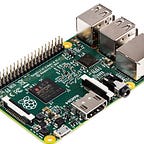As software development cycles continue to evolve, the integration of DevOps practices has become a vital aspect for leading companies in the industry. DevOps, a combination of “development” and “operations,” emphasizes collaboration, automation, and monitoring throughout the software delivery lifecycle. Among its many practices, Continuous Integration (CI) and Continuous Delivery (CD) are pivotal in enhancing efficiency, reducing errors, and accelerating time to market. In this article, we will delve into the significance of CI/CD and provide insights into their effective implementation.
What is Continuous Integration (CI)?
Continuous Integration is a development practice where developers regularly merge their code changes into a shared repository multiple times a day. Each integration is automatically verified by running tests to quickly detect integration errors and reduce the time it takes to release new software updates.
Key advantages of Continuous Integration include:
- Fast Feedback Loop: Early detection of defects allows developers to address issues promptly.
- Improved Collaboration: By integrating code frequently, team members stay aligned and avoid integration conflicts.
- Increased Code Quality: Automation in testing and integration processes ensures that even minor code changes are validated.
